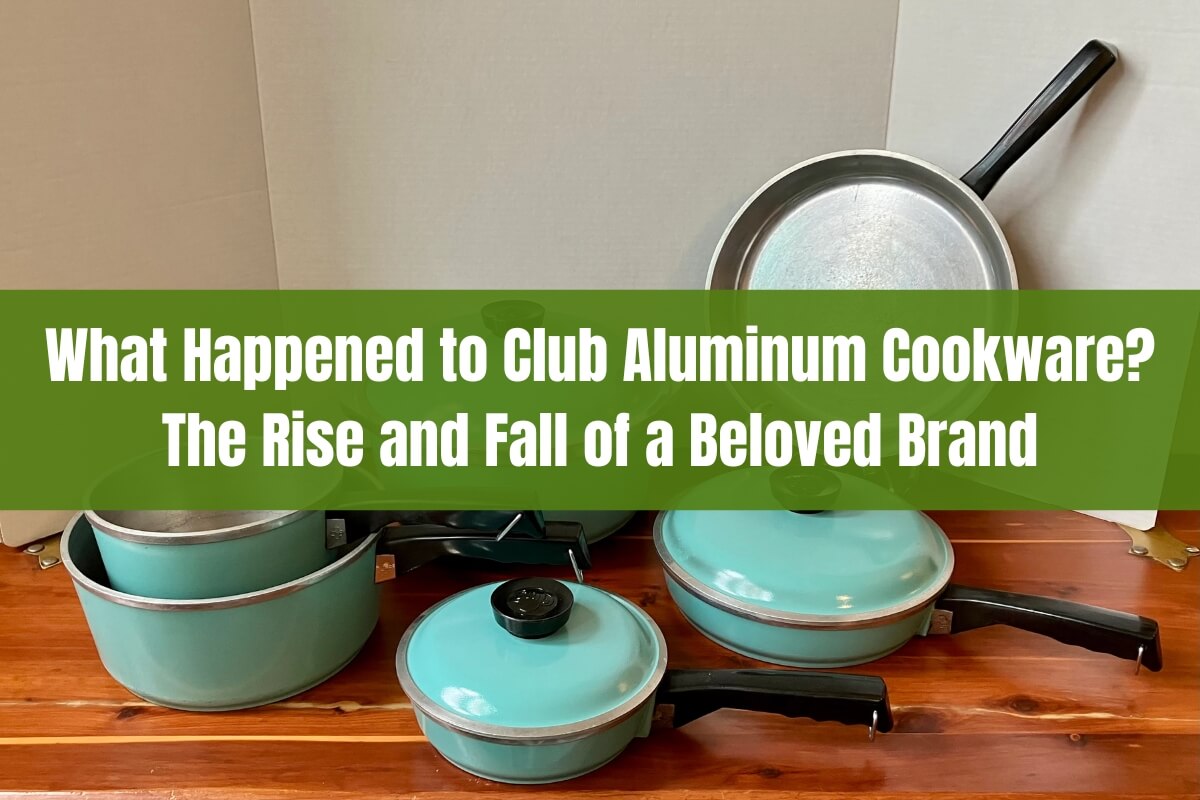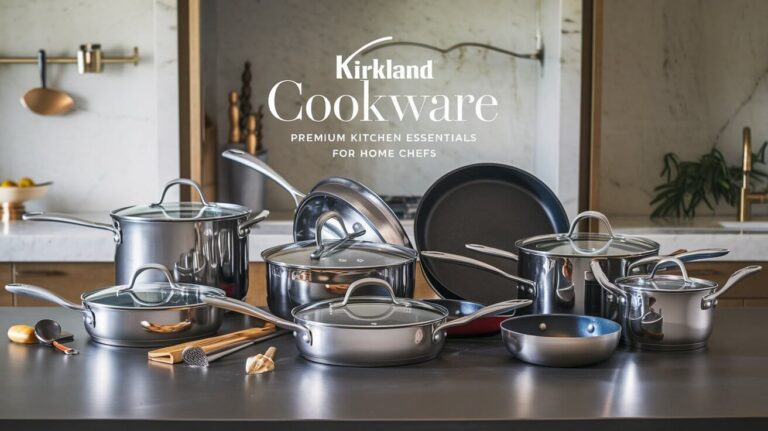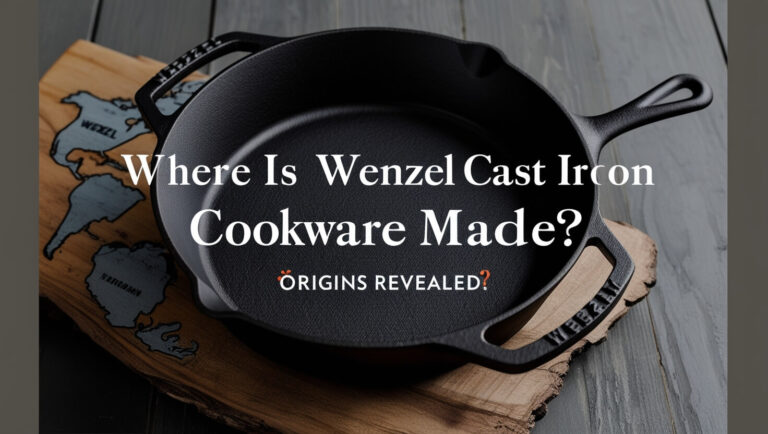
For generations, Club Aluminum cookware was a staple in American kitchens. The heavy-gauge pots and pans, with their signature raised rings and vibrant colors, were prized for their durability, even heating, and easy maintenance. Many home cooks fondly remember their mothers and grandmothers whipping up delicious meals using these iconic pieces of cookware.
However, in recent decades, Club Aluminum cookware has largely disappeared from store shelves and household kitchens. So what exactly happened to this once-beloved brand of cookware?
The short answer is that a combination of factors, including increased competition, changing consumer preferences, and product safety concerns, ultimately led to the decline and eventual discontinuation of Club Aluminum cookware as a mainstream product line.
In this detailed blog post, we’ll explore the fascinating history of Club Aluminum cookware, from its innovative beginnings to its heyday as a popular mid-century modern brand. We’ll also delve into the reasons behind its decline, examining the key events and societal shifts that contributed to its fading popularity. Additionally, we’ll discuss the current status of Club Aluminum cookware, including its availability, collectibility, and how to care for vintage pieces.
The Origins and Rise of Club Aluminum Cookware
Club Aluminum cookware traces its roots back to the early 1900s when it was first introduced by the Club Aluminum Company based in Los Angeles, California. The company’s founder, Charles M. Hall, was a pioneering metallurgist who had developed an affordable method for producing high-quality aluminum.
At the time, aluminum cookware was a revolutionary product that changed the way people cooked at home. Unlike traditional cast iron or stainless steel pots and pans, Club Aluminum’s cookware eliminated the need for water in recipes, instead relying on steam for cooking. This innovative approach not only made dishes look more appealing but also helped retain essential nutrients that would typically escape through evaporation.
The unique design of Club Aluminum cookware, with its tight-fitting lids and signature raised rings, further contributed to its appeal. The lids helped seal in moisture, while the raised rings on the pots and pans were both decorative and functional, allowing for easy pouring and stirring.
In the 1920s and 1930s, Club Aluminum cookware parties became a popular social event. Hostesses would invite friends and family over to their homes, and a Club Aluminum representative would demonstrate the benefits of the company’s cookware, generating sales through these interactive gatherings.
During this period, Club Aluminum cookware gained a reputation for its durability and versatility. The heavy-gauge aluminum construction ensured even heating and temperature distribution, making the cookware suitable for a wide range of cooking tasks, from simmering sauces to searing meats.
The Mid-Century Heyday and Iconic Designs
As Club Aluminum cookware gained popularity, the company expanded its product line to include a variety of sizes, shapes, and vibrant colors. The cookware’s distinctive mid-century modern aesthetic, with its rounded shapes and bold hues like avocado green, harvest gold, and poppy red, made it a stylish addition to any kitchen.
During the 1950s and 1960s, Club Aluminum cookware reached the peak of its popularity. The brand’s iconic designs became synonymous with the era’s optimistic and forward-looking spirit, gracing the kitchens of millions of American households.
Many homemakers took pride in their well-curated collections of Club Aluminum cookware, carefully selecting pieces that not only served their cooking needs but also complemented their kitchen decor. The cookware’s affordability and durability made it an accessible luxury for families across various income levels.
The Decline: Competition, Changing Trends, and Safety Concerns
Despite its enduring popularity, several factors contributed to the eventual decline of Club Aluminum cookware as a mainstream product line:
Competition from New Materials and Brands
As the 20th century progressed, Club Aluminum faced increasing competition from other cookware brands that introduced new materials and technologies. The rise of non-stick coatings, such as Teflon, and the popularity of stainless steel and ceramic cookware provided consumers with more options.
While Club Aluminum attempted to adapt by releasing a line of non-stick cookware in the 1970s, the new coatings did not perform as expected, leading to quality issues and product recalls.
Changing Consumer Preferences
As cooking methods and lifestyles evolved, consumer preferences shifted away from the traditional heavy-gauge aluminum cookware that Club Aluminum offered. Lighter-weight, easier-to-maneuver pots and pans became more desirable, especially for smaller households and busy lifestyles.
Additionally, the advent of modern kitchen appliances, such as slow cookers and electric pressure cookers, made some of the functions of Club Aluminum cookware less essential for many home cooks.
Safety Concerns
In the 1980s and 1990s, concerns arose about the potential health risks associated with aluminum cookware. While the scientific evidence was inconclusive, some studies suggested a possible link between aluminum exposure and neurological disorders like Alzheimer’s disease.
These concerns, though largely unfounded, contributed to a decline in consumer confidence in aluminum cookware, including Club Aluminum products. Many households opted to switch to alternative cookware materials perceived as safer, such as stainless steel or ceramic.
The Current Status of Club Aluminum Cookware
Despite its declining mainstream popularity, Club Aluminum cookware has not entirely disappeared. In fact, the brand has developed a dedicated following among vintage collectors and those seeking high-quality, long-lasting cookware.
Availability and Collectibility
While Club Aluminum cookware is no longer manufactured on a large scale, vintage pieces can still be found at antique stores, flea markets, and online marketplaces like eBay. The cookware’s iconic designs and vibrant colors have made it a sought-after collector’s item, with some rare or limited-edition pieces commanding premium prices.
Many collectors appreciate the nostalgia and history associated with Club Aluminum cookware, as well as its enduring quality and durability. Pieces in good condition, especially those with their original packaging or documentation, are highly prized.
Caring for Vintage Club Aluminum Cookware
If you’re fortunate enough to own or acquire vintage Club Aluminum cookware, proper care and maintenance are essential to ensure its longevity. Here are some tips for keeping your vintage pieces in top condition:
- Cleaning: Avoid using harsh abrasives or cleaners, as these can damage the aluminum surface. Instead, opt for a gentle, non-abrasive cleaner or a mixture of baking soda and water. For stubborn stains, try a paste made from cream of tartar and water.
- Seasoning: Regularly seasoning your Club Aluminum cookware can help maintain its non-stick properties and prevent rusting. Simply rub a thin layer of vegetable oil onto the surface and heat it before use.
- Storage: Store your Club Aluminum cookware in a dry, cool place, away from moisture and humidity, which can cause corrosion.
- Handling: Be gentle when using and cleaning your vintage pieces, as the aluminum can dent or scratch more easily than modern cookware materials.
By taking proper care of your vintage Club Aluminum cookware, you’ll be able to enjoy these iconic pieces for years to come, preserving a piece of culinary history in your kitchen.
Conclusion
While Club Aluminum cookware may no longer be a household name, its impact on American cooking and kitchenware design cannot be overstated. From its innovative beginnings and mid-century modern heyday to its eventual decline and collectible status, the brand’s story is a fascinating journey through the evolution of cookware and consumer preferences.
Whether you’re a vintage collector, a nostalgic home cook, or simply appreciative of well-crafted, long-lasting products, there’s something special about Club Aluminum cookware that continues to captivate and inspire. By understanding its history and taking care of vintage pieces, we can keep the legacy of this beloved brand alive for generations to come.






